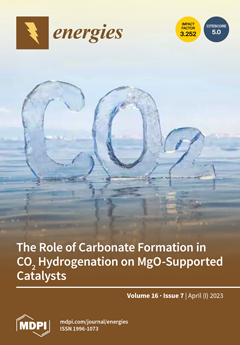This study evaluated different strategies to increase gas–liquid mass transfer in a randomly packed gas stirred tank reactor (GSTR) continuously fed with second cheese whey (SCW), at thermophilic condition (55 °C), for the purpose of carrying out in situ biogas upgrading. Two different H
2 addition rates (1.18 and 1.47 L
H2 L
R−1 d
−1) and three different biogas recirculation rates (118, 176 and 235 L L
R−1 d
−1) were applied. The higher recirculation rate showed the best upgrading performance; H
2 utilization efficiency averaged 88%, and the CH
4 concentration in biogas increased from 49.3% during conventional anaerobic digestion to 75%, with a methane evolution rate of 0.37 L
CH4 L
R−1 d
−1. The microbial community samples were collected at the end of each experimental phase, as well as one of the thermophilic sludge used as inoculum; metanogenomic analysis was performed using Illumina-based 16S sequencing. The whole microbial community composition was kept quite stable throughout the conventional anaerobic digestion (AD) and during the H
2 addition experimental phases (UP1, UP2, UP3, UP4). On the contrary, the methanogens community was deeply modified by the addition of H
2 to the GSTR. Methanogens of the
Methanoculleus genus progressively increased in UP1 (47%) and UP2 (51%) until they became dominant in UP3 (94%) and UP4 (77%). At the same time, members of
Methanotermobacter genus decreased to 19%, 23%, 3% and 10% in UP1, UP2, UP3 and UP4, respectively. In addition, members of the
Methanosarcina genus decreased during the hydrogen addition phases.
Full article





